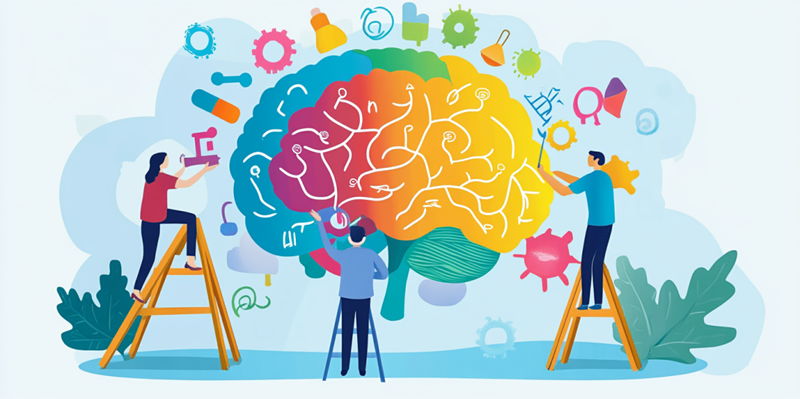In today’s competitive business landscape, attracting and retaining top talent is not just important but crucial for achieving organizational success. This need has heightened the importance of integrating technology into Human Resource (HR) processes. One such pivotal technology is the Human Resource Information System (HRIS), which aims to simplify and enhance various HR functions to drive employee engagement and retention. Organizations that adopt HRIS technology find themselves better positioned to manage talent more efficiently, thus fostering a positive and productive workplace culture. Let’s delve into how HRIS technology revolutionizes talent management and retention across different dimensions of HR operations.
Streamlined Recruitment Processes
An effective HRIS can significantly simplify the recruitment process. With the integration of Applicant Tracking Systems (ATS), HR professionals can manage job postings, filter resumes, and communicate with candidates more efficiently. This streamlining saves time and improves the quality of hires and the candidate experience. Additionally, HRIS utilizes data analytics to identify hiring trends and refine recruitment strategies continuously. By understanding which channels bring in the best candidates and how long it takes to fill positions, businesses can make informed decisions and improve their overall recruitment strategy.
Moreover, automating routine tasks like scheduling interviews and sending offer letters frees up HR professionals to focus on more strategic activities. This not only increases overall efficiency but also ensures that the organization stays ahead in the talent acquisition game. It’s not just about hiring; it’s about hiring smarter and faster, leveraging technology to bring in the best talent. Implementing an HRIS allows organizations to streamline recruitment processes, thereby boosting productivity and enhancing the candidate’s experience, making it a win-win situation for both the employer and potential hires.
Improved Onboarding Experience
Once recruitment is complete, the onboarding phase becomes critical for retention. A well-designed HRIS ensures a seamless onboarding experience through digital checklists, automated document management, and training modules. These features help new hires feel welcomed and prepared from their first day, making the transition into their new role smoother. Consistent and engaging onboarding experiences can significantly improve employee retention rates, sometimes by up to 82%. An HRIS facilitates this by creating a structured onboarding program tailored to each role, ensuring that new employees understand their responsibilities and the company’s culture.
Furthermore, the initial positive experience can lay the foundation for long-term loyalty and commitment. Most employees decide whether to stay with an organization within the first few months, making the onboarding phase critical. By leveraging HRIS, employers can offer a well-rounded introduction to the company, making sure that new hires have all the tools and knowledge they need to succeed. This, in turn, helps in fostering a sense of belonging and engagement from the get-go, leading to higher retention rates and a more committed workforce.
Enhanced Employee Engagement
Employee engagement is another crucial area where HRIS plays a significant role. Many HR systems come with tools for employee surveys, feedback mechanisms, and recognition programs. These tools enable organizations to gauge employee satisfaction and motivation levels regularly. By assessing employee sentiment, HR leaders can identify areas needing improvement and implement initiatives to foster a positive workplace culture. Enhanced engagement not only boosts productivity but also plays a significant role in reducing turnover rates.
Gamification elements embedded in HRIS can also enhance the employee experience by making learning and development more enjoyable and accessible. This form of interactive engagement contributes significantly to increased motivation and involvement. A highly engaged workforce is more likely to stay with the company, thereby reducing turnover rates. Organizations that prioritize employee engagement through effective use of HRIS often find themselves enjoying higher levels of productivity, job satisfaction, and overall workplace morale.
Learning and Development Opportunities
Investing in employee development is essential for retaining top talent. An HRIS facilitates training and development tailored to individual aspirations and job-specific skills. This can include e-learning modules, webinars, face-to-face training, and formal certifications. When employees feel that their professional growth is being supported, they are more likely to show loyalty to the company. According to LinkedIn’s 2023 Workplace Learning Report, 94% of employees would stay longer at a company if it invested in their career development, emphasizing the need for robust learning opportunities.
HRIS platforms make it easy to track employees’ learning journeys, ensuring they have access to the resources they need to advance their careers. By offering a variety of training options, organizations can cater to different learning preferences and needs, making the development process more effective and engaging. This not only helps in retaining talent but also in building a more skilled and capable workforce, ready to meet future challenges and drive the organization toward success.
Comprehensive Succession Planning
Succession planning is crucial for long-term organizational success, and HRIS proves invaluable in this respect. The system allows organizations to identify high-potential employees, document critical role capabilities, and create personalized development plans. This cultivates a culture of internal mobility and career progression, boosting employee loyalty and mitigating the risk of losing talent to competitors. Having a robust succession plan secures the organizational future and reinforces the company’s commitment to employee growth and development.
Effective succession planning ensures that key roles are filled by prepared and competent individuals, maintaining business continuity and operational efficiency. By leveraging HRIS for succession planning, organizations can systematically prepare for future leadership needs, reducing the risks associated with sudden vacancies and leadership gaps. This proactive approach helps in retaining top talent and developing future leaders, ensuring the organization’s sustained growth and competitiveness in the market.
Data-Driven Decision Making
HRIS also empowers organizations with data-driven decision-making capabilities. By collecting and analyzing HR data, organizations can gain insights into trends, identify areas for improvement, and make informed decisions. These analytical capabilities enable HR leaders to optimize recruitment strategies, performance evaluations, and workforce planning. Leveraging data helps in addressing employee needs and aspirations more effectively, leading to higher retention rates and a more satisfied workforce. Embracing HRIS technology is fast becoming indispensable for organizations aiming to thrive in the ever-evolving business landscape.

